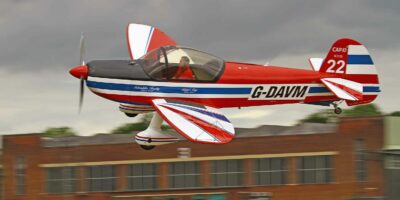The implications of Garmin’s revolutionary ‘Autoland’ system are broad and deep – they’re likely to change the way pilots fly and how student pilots learn to fly. The one-button system offered first on Piper M600 turboprops and Cirrus SF-50 Vision Jets instantly takes over and engages the autopilot, announces an emergency on the dedicated radio frequency of 121.5, evaluates nearby weather and terrain, flies an approach to the closest suitable runway, touches down and stops. It even announces on the radio the runway where the aircraft landed is now closed. How long does it take the Garmin G3000-based system to make these calculations about how and where to fly? Three nanoseconds. That’s even quicker than a pilot can say ‘yes’ to an ATC offer of a direct routing.
First, I’ve got to confess I never thought the FAA would even consider such a radically comprehensive system with so many new capabilities and question marks. But the agency’s willingness to approve Autoland, just like its previous approval of non-TSO avionics for Standard-category aircraft, shows a bold willingness to move safety-enhancing technology forward, even when it has some element of risk. That’s new, and welcome.
Right now, Garmin’s Autoland feature is limited to emergency use on a small number of new aircraft, but its impact is far reaching. The aircraft types have autothrottles and G3000 avionics suites, but Autoland is sure to migrate quickly up and down the GA spectrum. For single-engine piston aircraft where the primary emergency scenario is engine failure, it’s easy to imagine a far simpler ‘auto-glide’ system that doesn’t tie into the aircraft’s propulsion, landing gear, flaps or braking systems. Garmin, ForeFlight and other popular aviation apps already offer graphical ‘glide range’ rings on moving maps that constantly calculate wind speed and direction, aircraft glide ratio, and terrain height. By linking that information with a modern, always-on autopilot, an auto-glide system could guide stricken aeroplanes to the nearest suitable runway (assuming there is a runway within glide range).
“Right now, Autoland is limited to emergency use on a small number of new aircraft – but its impact is far reaching”
Also, autothrottles, once limited to exotic jets, are likely to become widespread among future piston aircraft, so they can get Autoland, too. That will require computerised engine controls, but the FAA’s new-found willingness to approve such technological improvements could also hasten that change. Autoland also requires a radar altimeter in the aircraft, so perhaps those will get more common, and less expensive, too.
Airliners have long had the ability to perform ‘Category III’ landings in zero-zero weather at a few hundred high-use runways around the country. Now, Autoland makes many thousands of runways suitable for similarly automated landings. Just about any runway that has a GPS approach will do. As Autoland expands to more aircraft, automated approaches and landings are sure to move from rare emergencies to standard operating procedures. Airlines, and individuals flying their own aircraft, will select the desired runway, push a button and monitor their aircraft as they fly to touchdown. Hand-flown approaches and manual landings will be relegated to flight simulators, checkrides and situations where the technology fails. So, hand-flown landings will seem like emergencies and automated landings will be normal. From there, it’s a small step to aircraft taking off, climbing to altitude and following pre-programmed routes all by themselves. They could even be rerouted from the ground autonomously.
As the role of being a pilot changes from active planner and decision-maker to a more passive monitor and evaluator, the idea of single-pilot crews for cargo carriers – and passenger airlines – doesn’t seem far fetched. It’s true that pilot error is the root cause of about 75 per cent of all aviation accidents. What engineer or regulator could oppose technology with the potential to improve flight safety? The pilot shortage that so concerns the airline industry today would be gone. And worries about a lack of flight experience or substandard overseas flight training would be addressed – to a degree. Autoland and the underlying technology will surely save lives in cases of pilot incapacitation, but its real impact will change all aspects of aviation. Flight training, professional pilot qualifications, airline staffing levels, passenger expectations and a willingness to fly on ‘small’ aircraft.
Fifty years ago, airlines and military cockpits typically had four crew members: a navigator, flight engineer, co-pilot and pilot. Navigators and flight engineers were replaced with electronic boxes and microchips that perform those roles with speed and accuracy – and they never get tired.
As pilots, we take pride in developing critical decision-making skills. We have trouble believing that new software could make those skills obsolete. We identify with our roles, as getting to the left seat requires dedication and commitment, of which we’re proud. I now feel a new-found sympathy towards navigators and flight engineers, who performed those jobs with knowledge and skill. Pilots have some remarkable skills – and they’re sure to find their way to electronic boxes that are capable of taking over even the most critical flying tasks.
RV-4 pilot, ATP/CFII, specialising in tailwheel and aerobatic instruction
[email protected]







